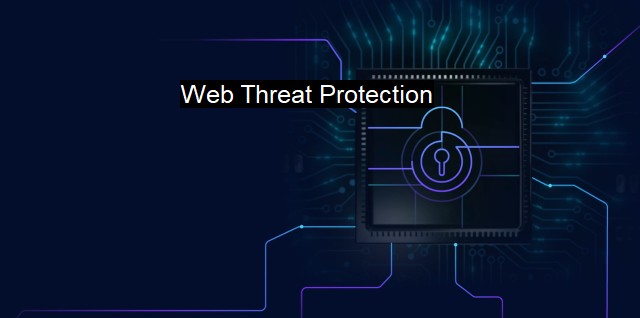What is Web Threat Protection?
Strengthening Cybersecurity: The Importance of Web Threat Protection in Keeping Users Safe Online
Web Threat Protection plays an invaluable role in the cybersecurity infrastructure as the Internet becomes a more integral part of both business processes and personal communication. Due to the increased interconnectivity provided by the digital age, there's an increased risk of incurring severe damage due to cyber threats. Cyber attackers continually design complex ways to exploit network vulnerabilities and those inadequately prepared often fall victim. Consequently, understanding the comprehensiveness and crucialness of web threat protection has become more necessary.Web Threat Protection refers to a cluster of defenses put in place to protect online systems and networks from potential threats within the cyber domain. In the wider scope of cybersecurity, it specifically zooms in on web-based threats, serving as the barricade to shield electronic assets from malicious entities that exploit network, application, or coding vulnerabilities.
Threats prohibited by web threat protection are vast and varied, necessitating a comprehensive approach to threat handling and mitigation. These threats can include phishing attacks that deceive people into giving credit card information, social security numbers, or password data; ransomware attacks that immobilize computer files until ransom is paid; and other malware forms that hijack systems, spy on activities or disrupt digital operations.
Web threat protection becomes potentially more complex under the increasing trend of cloud-based systems and operations, the wide range of devices used to access the Internet, and the emergence of Internet of Things (IoT) devices and their corresponding vulnerabilities.
Different tools and strategies are deployed to provide comprehensive web threat protection. The use of advanced firewalls effectively blocks out known threats and increasingly refuses entry to novel but suspicious activities or requests. Intrusion Detection Systems (IDS) or Intrusion Prevention Systems (IPS) scan and monitor network traffic for potentially harmful behavior, investigating any anomalies that could be suggestive of a cyber threat.
Next, we have antivirus and antimalware solutions. They scan, identify, and remove malicious software. Traditional antivirus programs handle older, known threats, while antimalware is designed to address the evolving risks and novel threats posed by today's online environment.
An emerging tool in web threat protection is the utilization of Artificial Intelligence (AI) and Machine Learning (ML). These technologies help to identify and neutralize potential threats before they even reach a system's firewall. AI provides proactive threat protection, leveraging the ability to analyze large quantities of data and determining patterns that forecast potential threat behavior.
We are seeing an increased emphasis on regular system audits to spot and address vulnerabilities and utilisation of VPN to secure the online activities of businesses and individuals.
Beyond physical systems and infrastructure, a fundamental part of web threat protection underscores the need for awareness and education. Encouraging safe browsing habits and understanding the potential risks of phishing or malicious attack vectors is equally critical in maintaining an efficient line of defense against cyber threats.
Although robust, threats will continue to evolve, and so will web threat protection. The growing interconnectivity of today's world brings both convenience and added vulnerability. But by understanding, devising, and harnessing appropriate tools, techniques, and constant vigilance, it is possible to stand one step ahead of would-be threat agents.
The increasingly innovative steps taken in web threat protection from complex firewalls to AI-based defenses illustrate not just the necessity but the investment into securing an ever-growing digital world. With cyber threats on the rise and the Internet a part of essential life, web threat protection continues to be one of the most crucial aspects of personal and institutional cybersecurity. it is an ongoing battle, assuring us that digital life remains a convenience, not a vulnerability.

Web Threat Protection FAQs
What is web threat protection?
Web threat protection is a cybersecurity measure designed to protect web users from malicious activities, such as malware or phishing attacks, that can compromise web security. It is an essential feature of antivirus software and can prevent potential web threats from infecting your system.How does web threat protection work?
Web threat protection works by scanning web traffic in real-time to detect any malicious activities or threats. The software will then block or quarantine any identified threats, preventing them from infecting your system. It also utilizes advanced techniques such as machine learning and behavioral analysis to identify new and emerging threats.Do I need web threat protection if I already have antivirus software?
Yes, web threat protection is a crucial component of any antivirus software. While traditional antivirus software can protect your system from local threats, web threat protection is designed to protect you from threats that originate from the web. By combining both, you can ensure your system is protected from all possible threats.What are the benefits of using web threat protection?
The benefits of using web threat protection include protecting your system from dangerous malware, preventing phishing attacks, safeguarding your personal information, and ensuring a safer web browsing experience. It can also provide you with real-time alerts and notifications, giving you peace of mind knowing that your system is fully protected.| | A | | | B | | | C | | | D | | | E | | | F | | | G | | | H | | | I | | | J | | | K | | | L | | | M | |
| | N | | | O | | | P | | | Q | | | R | | | S | | | T | | | U | | | V | | | W | | | X | | | Y | | | Z | |
| | 1 | | | 2 | | | 3 | | | 4 | | | 7 | | | 8 | | |||||||